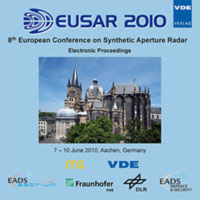Processing of Interferometric TanDEM-X Data
Conference: EUSAR 2010 - 8th European Conference on Synthetic Aperture Radar
06/07/2010 - 06/10/2010 at Aachen, Germany
Proceedings: EUSAR 2010
Pages: 4Language: englishTyp: PDF
Personal VDE Members are entitled to a 10% discount on this title
Authors:
Fritz, Thomas; Breit, Helko; Yague-Martinez, Nestor; Rossi, Cristian; Niedermeier, Andreas; Lachaise, Marie (German Aerospace Center, (DLR), Remote Sensing Technology Institute, 82234 Wessling, Germany)
Balss, Ulrich; Rodriguez, Fernando (Technical University of Munich, Remote Sensing Technology, Arcisstr. 21, 80333 München, G)
Abstract:
In 2010, the German radar satellite TanDEM-X will be launched and flown in close formation with the TerraSAR- X satellite, launched in 2007. Together, they establish the first bi-static single pass interferometer in space. The primary TanDEM-X mission goal is to generate a global Digital Elevation Model (DEM) with a relative point-to-point height accuracy of 2 meters for moderate terrain at 12 m posting. For that purpose interferometric SAR data will be acquired over a period of 3 years in parallel to the operational running TerraSAR-X mission. Systematic processing of SAR raw data to so-called raw DEMs is performed by one single processing system, the Integrated TanDEM Processor (ITP). The final global DEM is then calibrated and mosaicked by a second system, the Calibration and Mosaicking Processor (MCP). In comparison to repeat pass interferometry, the requirements on instrument accuracy are much more demanding for bi-static operations. The oscillators of the two instruments are running independently and may drift. Other instrument characteristics, namely, antenna phase patterns, electronic delays, and calibration networks effects have to be precisely compensated. Timing and phase synchronization as well as instrument corrections are the first of the challenging tasks of the ITP. Further key elements of the interferometric processing chain are the approximation of the bi-static acquisition geometry for focusing 0, high resolution image co-registration, spectral matching of time variant azimuth spectra, unwrapping of steep phase gradients on small scales, and finally consistent geocoding of all product layers. The scope of this paper is to present an overview of the ITP functionalities and to summarize the processing results in terms of product characteristics. Detailed presentations on specific ITP processing aspects and related results will be given (References).


